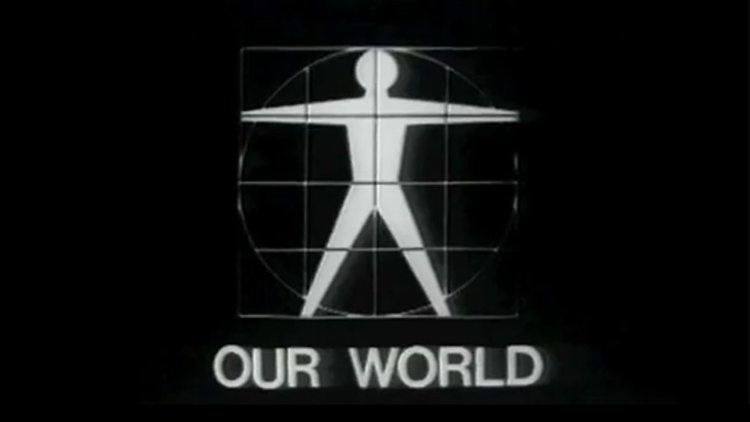Created by Aubrey Singer Original language(s) Various Running time 2.5 hours Initial release 25 June 1967 First episode date 25 June 1967 Genre Television special | Country of origin Various Location(s) Various Original network Various Director Derek Burrell Program creator Aubrey Singer Cast Pablo Picasso | |
 | ||
Similar Magical Mystery Tour, Around the Beatles, How I Won the War, The Beatles at Shea Sta, Help! | ||
Our world 1967
Our World was the first live, international, satellite television production, which was broadcast on 25 June 1967. Creative artists, including The Beatles, opera singer Maria Callas, and painter Pablo Picasso—representing nineteen nations—were invited to perform or appear in separate segments featuring their respective countries. The two-and-half-hour event had the largest television audience ever up to that date: an estimated 400 to 700 million people around the globe watched the broadcast. Today, it is most famous for the segment from the United Kingdom starring the Beatles. They performed their song "All You Need Is Love" for the first time to close the broadcast.
Contents
- Our world 1967
- Information age the satellite broadcast that changed our world
- Planning
- Participant countries
- The broadcast
- The Beatles sequence
- In Popular Culture
- References
Information age the satellite broadcast that changed our world
Planning
The project was conceived by BBC producer Aubrey Singer. It was transferred to the European Broadcasting Union, but the master control room for the broadcast was still at the BBC in London. The satellites used were Intelsat I (known as "Early Bird"), Intelsat 2-2 ("Lani Bird"), Intelsat 2–3 ("Canary Bird"), and NASA's ATS-1.
It took ten months to bring everything together. One hitch was the sudden pull-out of the Eastern Bloc countries headed by the Soviet Union in the week leading up to the broadcast. Apparently it was a protest at the Western nations' response to the Six-Day War.
The ground rules included that no politicians or heads of state could participate in the broadcast. In addition, everything had to be 'live', so no use of videotape or film was permitted. Ten thousand technicians, producers, and interpreters took part in this gigantic broadcast. Each country would have its own announcers, due to language issues, and interpreters would voice-over the original sound when not in a country's native language. In the end 14 countries participated in the production that was transmitted to 24 countries with an estimated audience of between 400 and 700 million people.
Participant countries
The participant countries were the following ones:
Czechoslovakia, Poland, East Germany, the Soviet Union and Hungary withdrew prior to the broadcast, in protest for the Six-Day War.
The broadcast
The opening credits were accompanied by the Our World theme sung in 22 different languages by the Vienna Boys' Choir.
Canada's CBC Television had Marshall McLuhan being interviewed in a Toronto television control room. At 7:17 pm GMT, the show switched to the United States' segment about the Glassboro, New Jersey, conference between American president Lyndon Johnson and Soviet premier Alexei Kosygin; since Our World insisted that no politicians be shown, only the house where the conference was being held was televised. National Educational Television's (NET) Dick McCutcheon ended up talking about the impact of the new television technology on a global scale.
The show switched back to Canada at 7:18 pm GMT. Segments that were beamed worldwide were from a Ghost Lake, Alberta ranch, showing a rancher, and his cutting horse, cutting out a herd of cattle. The last Canadian segment was from Kitsilano Beach, located in Vancouver's Point Grey district at 7:19 pm GMT.
At 7:20 pm GMT, the program shifted continents to Asia, with Tokyo, Japan being the next segment. It was 4:20 a.m. local time and NHK showed the construction of the Tokyo subway system.
The equator was crossed for the first time in the program when it switched to the Australian contribution, which was at 5:22 a.m. Australian Eastern Standard Time (AEST). This was the most technically complicated point in the broadcast, as both the Japanese and Australian satellite ground stations had to reverse their actions: Tokyo had to go from transmit mode to receive mode, while Melbourne had to switch from receive to transmit mode. The segment dealt with trams leaving the South Melbourne tram depot with Australian Broadcasting Commission's Brian King explaining that sunrise was many hours away as it was winter there. A scientific segment, later on in the broadcast, was also included that dealt with the Parkes Observatory tracking a deep space object.
The Beatles' sequence
The broadcast took place at the height of the Vietnam War. The Beatles were asked to write a song with a positive message. At 8:54 [GMT] the Beatles topped the event with their debut performance of "All You Need Is Love". The Beatles invited many of their friends to the event to create a festive atmosphere and to join in on the song's chorus. Among the friends were members of The Rolling Stones, Eric Clapton, Marianne Faithfull, Keith Moon and Graham Nash.
Although the program was originally recorded and transmitted in black-and-white, for its usage in the 1995 TV special The Beatles Anthology, the Beatles' performance on the 1967 program was colorized—using color photographs taken at the event as a reference. The sequence opens in its original monochromatic format and rapidly morphs into full colour conveying the brightly coloured "flower power" and "psychedelic"-style clothing worn by the Beatles and their guests that was popular during what was subsequently dubbed the "Summer of Love".
In Popular Culture
In the novel The Light of Other Days by Arthur C. Clarke and Stephen Baxter the global media empire run by Hiram Patterson is called OurWorld, the name chosen after the character saw the program as a child and was inspired to change the world.
